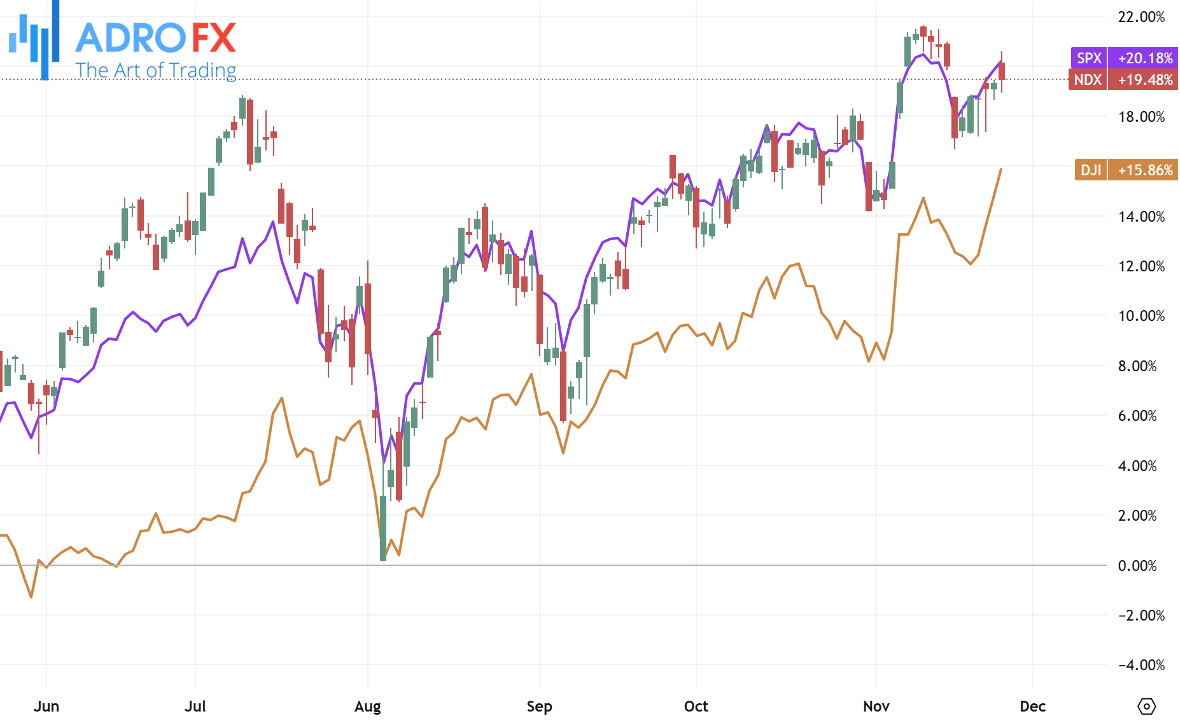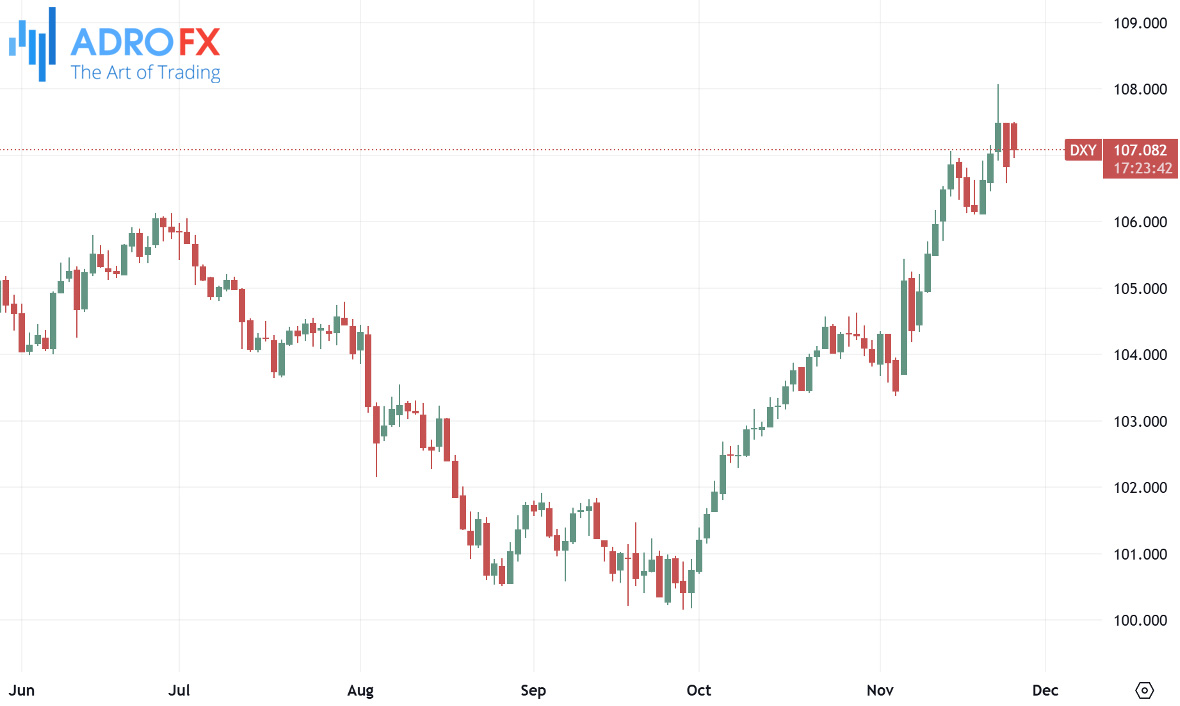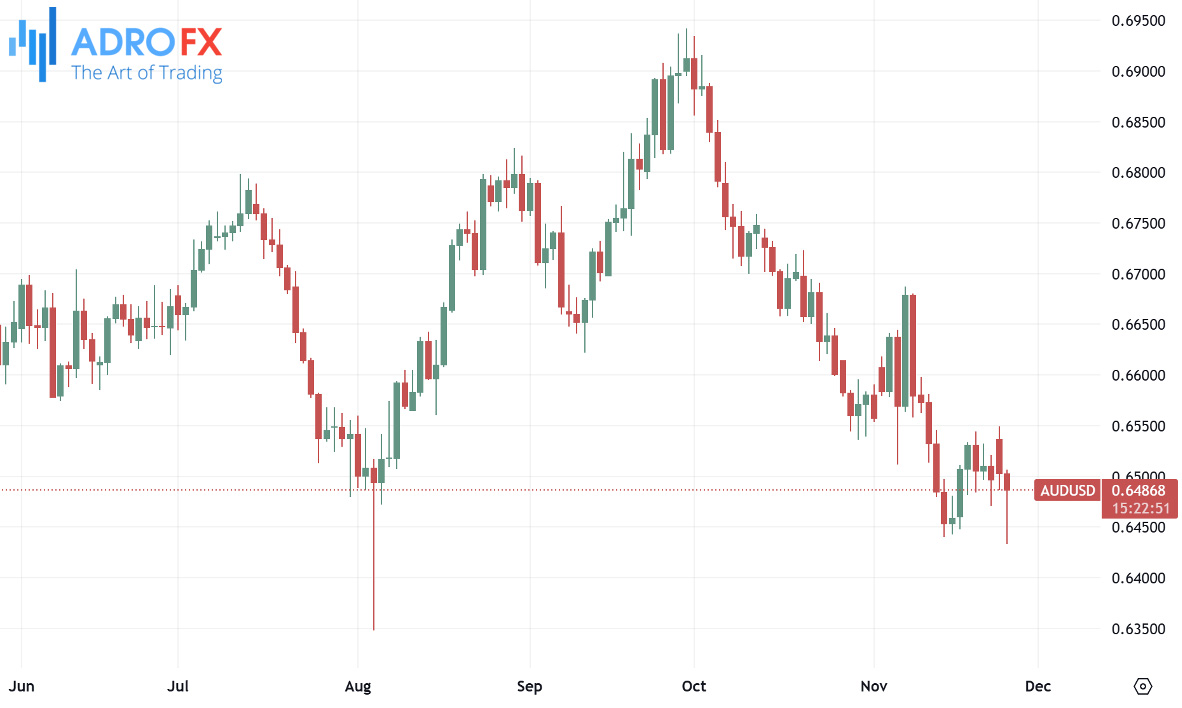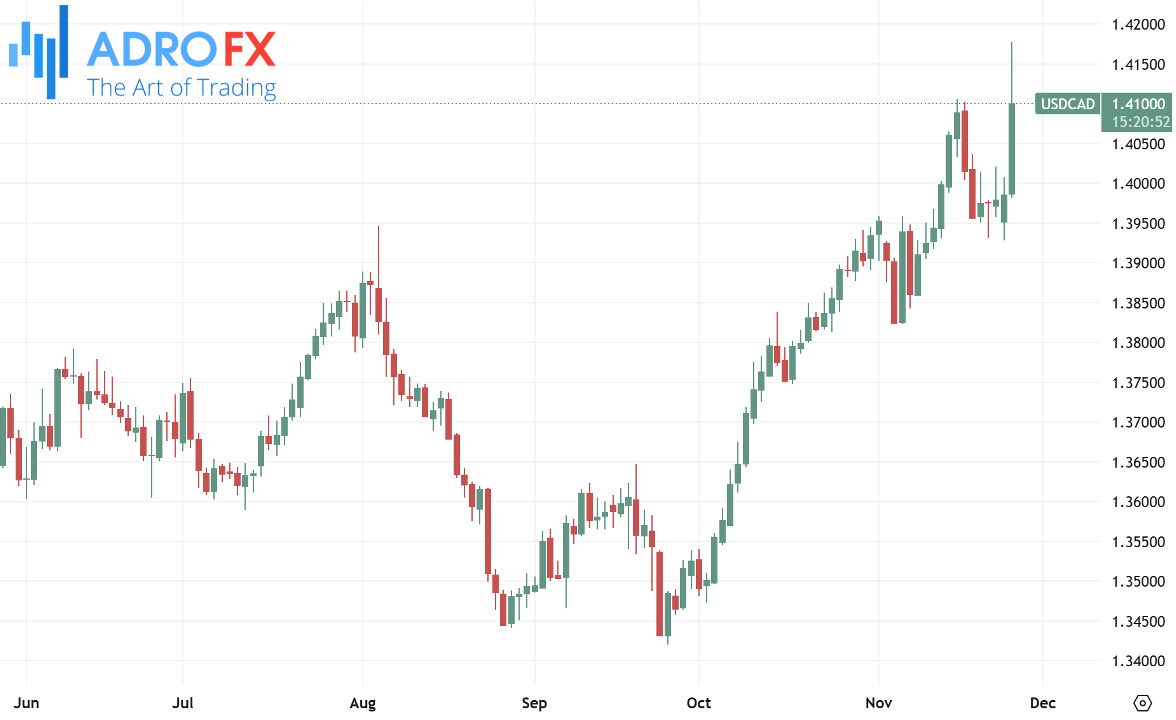Markets Rally on Bessent’s Nomination: Record Highs for the Dow | Daily Market Analysis

Key events:
- USA - CB Consumer Confidence (Nov)
- USA - New Home Sales (Oct)
- USA - FOMC Meeting Minutes
On Monday, the Dow Jones Industrial Average soared 440 points, or 1%, to close at a record high of 44,736.57. This milestone marked a strong start to the week, bolstered by President-elect Donald Trump’s announcement of Scott Bessent as the nominee for Treasury Secretary. The S&P 500 and NASDAQ Composite also posted gains of 0.3%, reflecting broad market optimism.

Bessent’s nomination eased market concerns about the economic direction under the new administration. As one of the most influential cabinet positions, the Treasury Secretary oversees economic policy, trade negotiations, and financial regulations. Bessent, a veteran investor, has been a vocal advocate for tax reform and deregulation to foster US business growth. His opposition to strict trade tariffs also reassured markets that the risk of a damaging trade war could be mitigated. The combination of these factors spurred confidence, lifting major indices to record territory.
The currency and bond markets reacted sharply to the news. The US dollar weakened slightly, retreating from recent highs, while Treasury yields - a recent pressure point for equities - declined significantly. Lower yields often ease borrowing costs and are generally seen as favorable for market sentiment.
Trump’s cabinet-building efforts extended beyond the Treasury.

He announced Pete Hegseth as his choice for Defense Secretary, Howard Lutnick for Commerce Secretary, and Mike Waltz, known for his critical stance on China, as National Security Adviser. These selections reflect a mix of business-oriented and hawkish policy influences, adding another layer of intrigue to the incoming administration's economic and geopolitical strategies.
In the forex market, the Australian Dollar faced challenges against the US Dollar on Tuesday. The pressure stemmed from Trump’s announcement of a 10% tariff increase on all Chinese goods and a 25% tariff on imports from Mexico and Canada. These measures raised concerns due to Australia's economic dependence on trade with China, its largest trading partner. China’s Ambassador to Australia commented that US trade policy would have far-reaching effects, emphasizing the importance of dialogue between Beijing and Washington. Despite these headwinds, the AUD found some support from the Reserve Bank of Australia’s hawkish stance on interest rates. The upcoming release of October’s Consumer Price Index (CPI) was anticipated to provide further direction for the currency.

In commodities, gold struggled to capitalize on its recent gains, trading near $2,600 per ounce. The precious metal briefly benefited from haven flows triggered by Trump’s tariff announcement but was weighed down by rising US Treasury yields and expectations that the Federal Reserve would maintain a less dovish stance. As a non-yielding asset, gold often faces headwinds when bond yields rise, making it less attractive to investors.

The Japanese Yen maintained a stable position against the USD but lacked strong upward momentum. Doubts about the Bank of Japan’s willingness or ability to further tighten monetary policy, coupled with a prevailing risk-on sentiment in equity markets, curbed the yen’s traditional appeal as a safe-haven currency.

In the UK, the GBP/USD pair dropped to the 1.2500 range, nearing a five-month low. Persistent geopolitical risks and expectations of limited rate cuts by the Bank of England, following robust inflation data, weighed on the pound. Analysts noted that the central bank is likely to move cautiously in its policy decisions.

Meanwhile, the USD/CAD pair climbed to 1.4110, its highest level since April 2020, driven by subdued market sentiment following Trump’s tariff plans and declining crude oil prices. As a major oil exporter, Canada’s currency often correlates with fluctuations in crude. West Texas Intermediate (WTI) oil traded near $69.00, pressured by reports of easing tensions in the Middle East, particularly between Israel and Hezbollah.

Looking ahead, investors are gearing up for a busy week of economic data releases. The Federal Open Market Committee meeting minutes, the first revision of US Q3 GDP, and the US Personal Consumption Expenditure (PCE) Price Index are expected to provide key insights into the Federal Reserve’s future policy direction. These developments are likely to play a crucial role in shaping market sentiment and currency dynamics in the near term.









